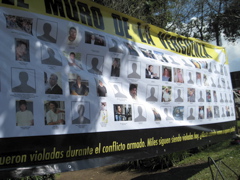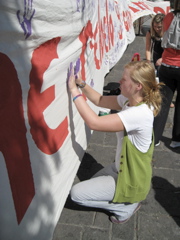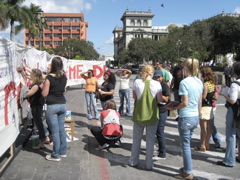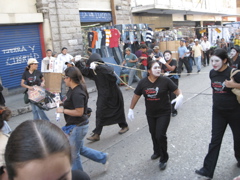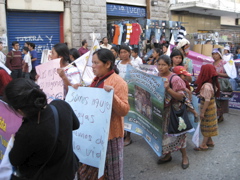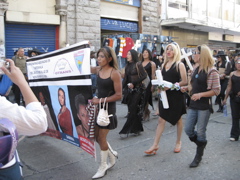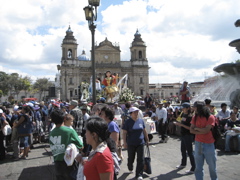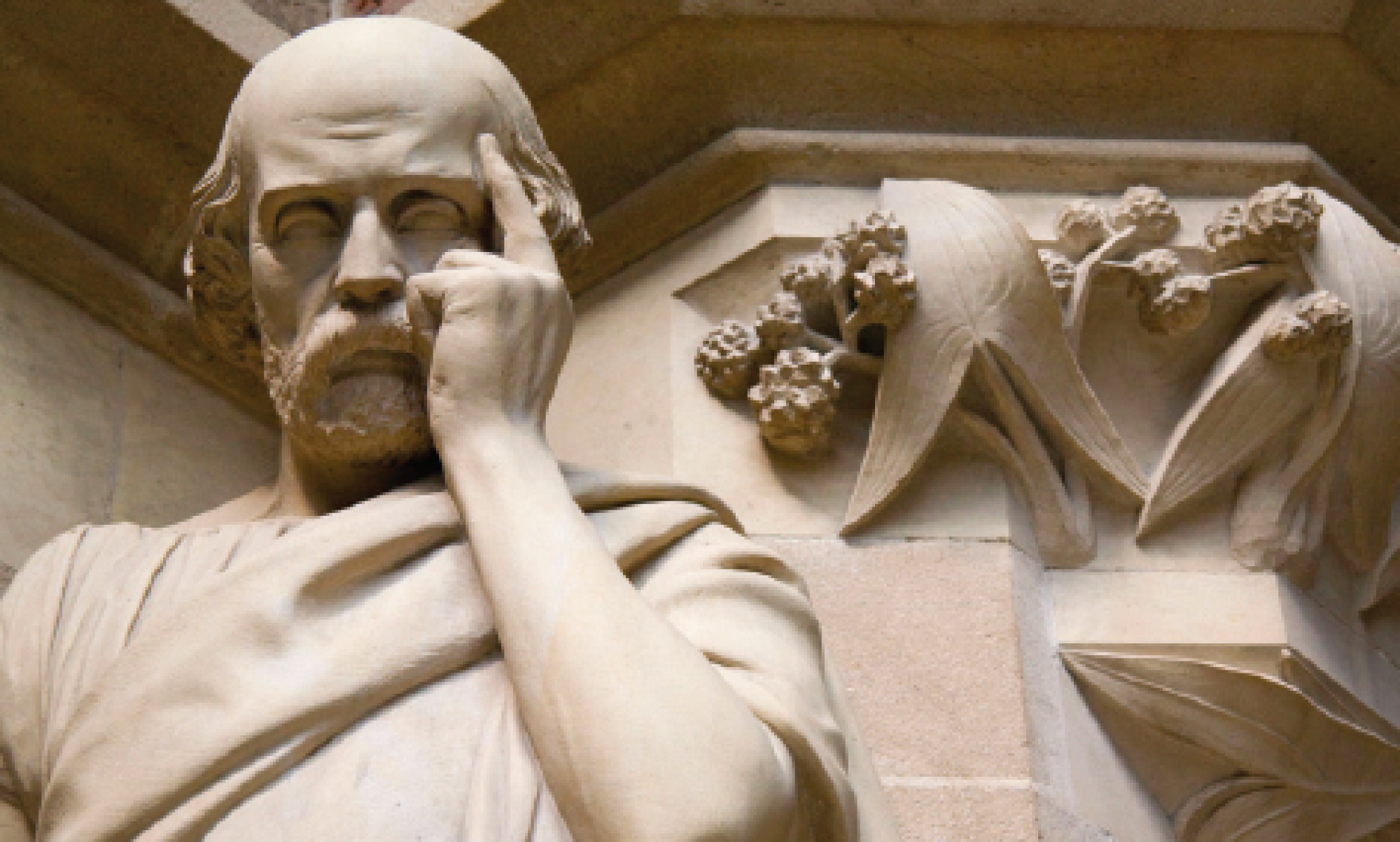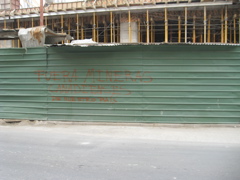On Wednesday we decided to attend a demonstration in Guatemala City to protest violence against women. We arrived at the Plaza de la Constitucion around 10:00 am. The Plaza stretches out in front of an ornate National Palace, which was converted some time ago into a museum. The offices of the president were moved from the palace to a more secure location: the building that used to be a military barracks directly behind it. We arrived before the protesters marched into the plaza, which gave us an opportunity get our bearings. Wandering around the plaza we saw placards against the Salvavidas company, which has declared insolvency to avoid paying its workers; we met with hunger strikers seeking budgetary support for services for the elderly; and finally we came to the “wall of shame” which showed pictures of prominent men accused (none sentenced) of sexual assault, including two former presidents, generals, ministers, former guerrillas, and others. There was also a huge cloth mantel the length of a city block and 6 feet high with hand marks (symbolically saying “stop”) and the words “Yo tambien fui violada; lo hablo; me rebelo; y con otras, me defiendo” (“I too was raped; I speak; I rebel; and with others defend myself”).
Since the march had not arrived we wandered down the narrow downtown streets until we met the procession en route. There were caravans with big floats, and processions—some somber, others exuberant—representing all manner of associations and walks of life; there were old and young; men and women; white, ladino and native; gay and straight, even transvestites (and they raised the most eyebrows among the passers-by) who were remembering three of their friends killed in the last two months. Everyone seemed pretty sympathetic, even the cops. I’ve never felt safer on the streets of Guatemala City than I did among this group.
Once we got to the plaza we stood or sat and listened to speeches of uneven quality on a broken microphone, including a speaker representing people in Honduras in resistance against the coup. The thrust of the protest was to demand that the Guatemalan government take responsibility for that fact that violence against women is a huge problem in Guatemala: that it has not abated with the end of the internal conflict, and that, indeed, there is a direct connection between the ongoing abuses of women and the genocidal violence of that period. More than the speeches I was moved by conversations with a group of women from a village about an hour from Guatemala City who told me that their mayor denies the existence of violence against women but that they get action from the public ministry whenever they denounce an injustice simply because, while officials can ignore one complaint, they cannot turn a blind eye when a whole crowd of women turns up on their doorstep.
The class discussion that followed our participation in the march was both insightful and perceptive.
